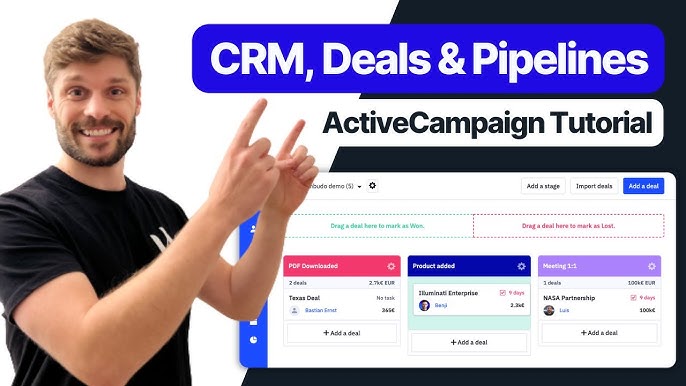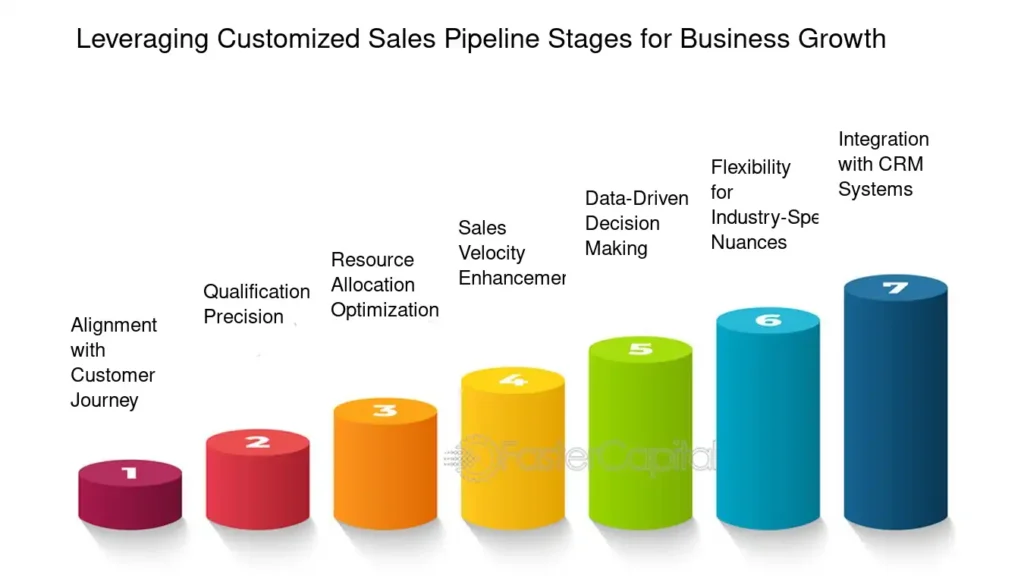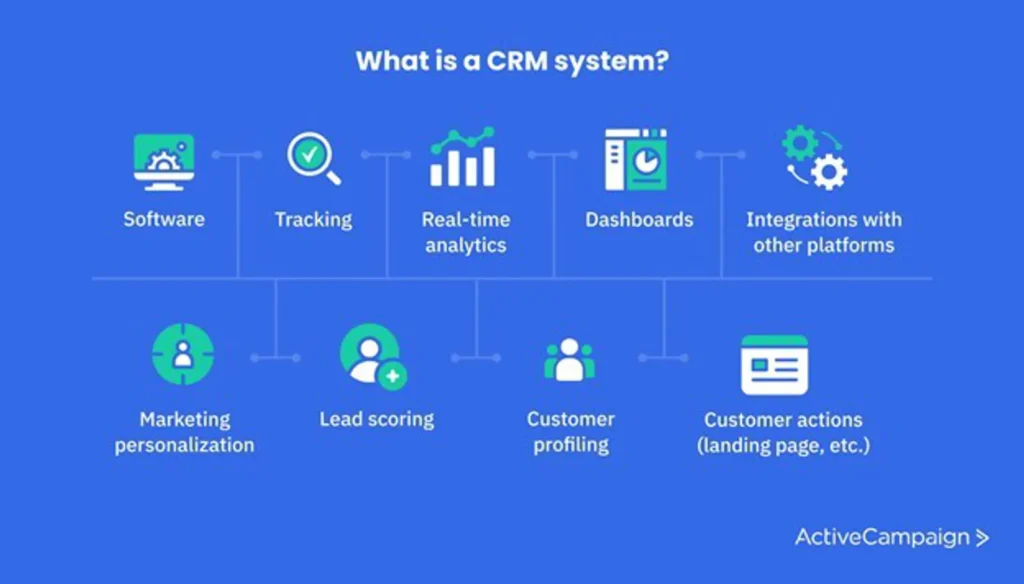
ActiveCampaign CRM | Learn to build and optimize sales pipelines in ActiveCampaign CRM. Step-by-step guide on stages, automation, and best practices for success.

How to Create a Pipeline in ActiveCampaign CRM (2025)
Managing your sales process efficiently can make or break your business. That’s where pipelines come into play. By visually organizing your workflow into stages, pipelines help you stay on top of leads, deals, and sales activities. ActiveCampaign CRM takes this concept to the next level, offering a powerful, user-friendly system for building and optimizing your pipeline.
In this guide, we’ll cover how to create a pipeline in ActiveCampaign CRM step by step. Whether you’re new to CRMs or a seasoned pro, this guide will equip you with everything you need to build, customize, and optimize a robust sales pipeline that drives results.
What is a Pipeline in ActiveCampaign CRM?
A pipeline in ActiveCampaign is a visual representation of your sales process, broken into distinct stages (e.g., Lead, Qualified Prospect, Proposal, and Closed Deal). It allows you to track where each deal is in the process, ensuring no opportunities fall through the cracks. ActiveCampaign takes this one step further with its automation capabilities, allowing you to streamline actions, follow-ups, and reporting.
Why Create a Pipeline in ActiveCampaign?
- Improved Organization: Know exactly where every lead stands in your sales cycle.
- Better Task Automation: Save time by automating follow-up emails, reminders, and lead scoring.
- Actionable Insights: Track your pipeline performance with metrics that help you refine your strategies.
You can watch this video for clarification.
ActiveCampaign CRM (Sales Automation, Pipelines, Deals, Calendly Integration)
Setting Up Your First Pipeline in ActiveCampaign
Here’s a straightforward process to help you get your pipeline up and running quickly:
Step 1: Access the Pipelines Section
First things first—log into your ActiveCampaign account and head to the Deals tab from the navigation bar. This is where your pipelines live. If you don’t see the Deals tab, make sure your chosen ActiveCampaign plan includes this feature.
Step 2: Create a New Pipeline
- Click the Add New Pipeline button.
- Name your pipeline (e.g., “Sales Pipeline Q1 2025”).
- Choose the deal stages you’d like. ActiveCampaign typically provides default stages like To Contact, Follow Up, Proposal Sent, and Won. For maximum efficiency, customize these to mirror your organization’s sales process.
To start a free 14-day trial with ActiveCampaign
Step 3: Define Your Stages
Each stage should represent a critical milestone in your workflow. For example:
- Lead – New inquiries or prospects.
- Qualified Prospect – Leads that meet your criteria.
- Proposal Sent – A deal proposal has been shared.
- Negotiation – You’re in talks to close the deal.
- Closed-Won – Success! You’ve secured the deal.
- Closed-Lost – Deals that didn’t work out this time (keep these for reference and analysis).
You can always go back and add or rearrange these stages to align with changing workflows.
Customizing Pipeline Stages and Actions

Add Properties to Each Stage
Customization is one of ActiveCampaign’s strengths. For each stage, add properties like:
- Deal Value
- Expected Close Date
- Priority Level
These fields allow you to filter and prioritize deals easily.
Automate Actions for Each Stage
This is where ActiveCampaign shines. Use its automation builder to create workflows triggered by certain events. For example:
- When a deal moves to the “Qualified Prospect” stage, ActiveCampaign can:
- Automatically send a follow-up email.
- Create a task for a sales rep to reach out.
Use Tags for Enhanced Organization
Tagging contacts and deals based on their behavior or characteristics (e.g., “Hot Lead,” “Repeat Customer”) can help segment deals and drive better outcomes.
Automating Tasks Within Your Pipeline
Automation is a game-changer in pipeline management. ActiveCampaign’s automation features can save you hours of manual work. Here’s how to leverage them effectively:
- Follow-ups
Set triggers to automatically send personalized emails after a new lead enters your pipeline.
- Task Assignments
Automate task assignments for team members based on deal stages.
- Deal Updates
Automatically update deal statuses or add notes when specified actions occur (e.g., “proposal viewed”).
- Notifications
Ensure your team never misses a beat with automated email or SMS notifications for key milestones.
- Lead Scoring
Use ActiveCampaign’s scoring system to rank leads based on engagement or likelihood to convert.
Integrating Other Tools with ActiveCampaign

ActiveCampaign isn’t just about pipelines—it’s built to play well with other tools in your tech stack. Here are a few must-try integrations:
- Calendar Tools (Google Calendar, Outlook)
Connect your calendar to schedule calls and follow-ups directly from ActiveCampaign.
- Video Conferencing (Zoom, Microsoft Teams)
Create instant meeting links for seamless virtual interactions.
- Project Management Software (Trello, Slack)
Ensure smooth transitions between sales and project execution by integrating with task management systems.
These integrations simplify workflows and provide a unified hub for your operations.
Tracking Pipeline Performance and Metrics
Having a well-built pipeline is only half the battle—you also need to track its effectiveness. ActiveCampaign provides intuitive dashboards and reports to help you monitor deal performance. Key metrics to track include:
- Deal Velocity
How quickly do deals move through your pipeline?
- Close Rate
Percentage of deals that reach the “Closed-Won” stage.
- Pipeline Value
The total value of deals at each stage.
- Lost Deals Analysis
Understand why deals are lost and refine your strategy.
Troubleshooting Common Pipeline Issues
Even the best-designed pipelines need occasional tweaks. Here are some common issues you may encounter and how to solve them:
- Stalled Deals
Use automation to send reminders or escalate stalled deals to higher-priority reps.
- Overloaded Stages
Review stages that consistently get bottlenecked and reevaluate their criteria or actions.
- Duplicate Deals
Use ActiveCampaign’s duplicate detection feature to clean up your CRM.
- Low Conversion Rates
Analyze data from lost deals to identify patterns or common obstacles. Adjust your pipeline accordingly.
Optimizing Your ActiveCampaign Experience
Once your pipeline is running smoothly, here are some tips to keep optimizing it over time:
- Regular Audits
Set a quarterly review to assess pipeline performance and make necessary adjustments.
- Team Training
Ensure your team understands how to use ActiveCampaign’s features to their full potential.
- Feedback Loop
Encourage sales reps to share feedback on the pipeline stages and automation workflows.
- Experiment with A/B Testing
Test different pipeline structures or automation rules to see what drives better results.
Transform Your Sales Process with ActiveCampaign
ActiveCampaign’s pipeline features are designed to make your sales process easier, faster, and more effective. By customizing your pipeline, automating repetitive tasks, and leveraging insights, you’ll have all the tools needed to close deals and grow your business.
Want to simplify your sales process even further? Try ActiveCampaign today and experience the difference for yourself.




















![SumoSEOTools PDF Addon Package Review [2025] Is it worth evaluating? SumoWebTools-Addon-Package](https://1seotools.io/wp-content/uploads/2025/03/SumoWebTools-Addon-Package-PDF-218x150.png)
![Always the Best SiteSpy : Visitor Tracking Analytics & SEO Review [2025] SiteSpy Visitor Tracking Analytics](https://1seotools.io/wp-content/uploads/2025/03/Visitors-analytics-2-218x150.png)
![Elevate Your SEO Strategy with Seo Tools Studio : Review [2025] Seo Studio Review 2025 | Professional Free SEO Tools](https://1seotools.io/wp-content/uploads/2025/03/studio-seo-tools-script-1-218x150.jpg)
![Review WP AMP — Accelerated Mobile Pages for WordPress & WooCommerce [2025] WP AMP — Accelerated Mobile Pages for WordPress & WooCommerce](https://1seotools.io/wp-content/uploads/2025/03/WP-AMP-for-WordPress-WooCommerce-218x150.png)
![Review of Prestashop SEO Optimizer Module-Advance SEO Expert Module [2025] Prestashop SEO Optimizer Module](https://1seotools.io/wp-content/uploads/2025/03/6-AdvanceSEOOptimizerRobot.txt-218x150.png)


Nice admeasuring